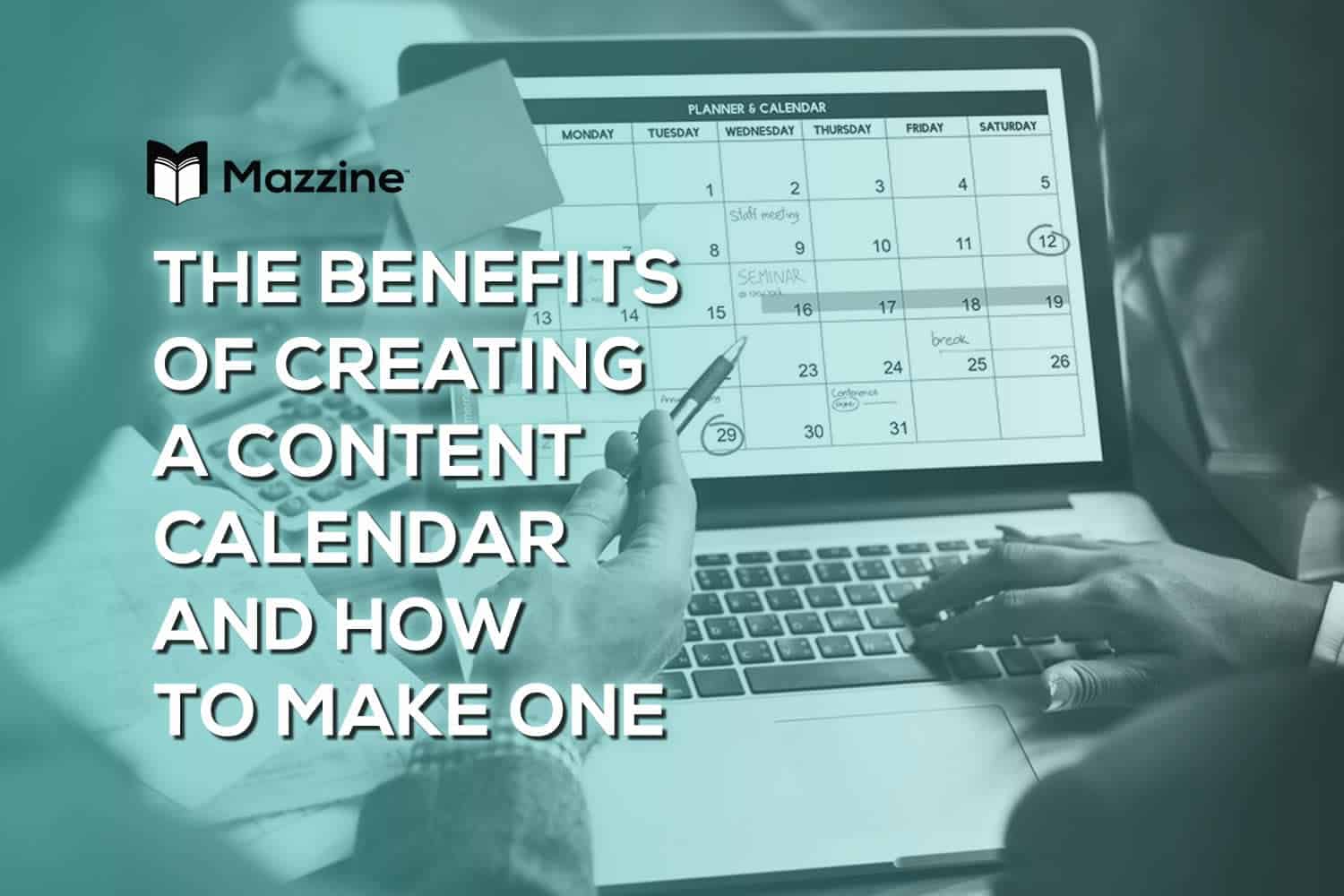Are you struggling to consistently create quality content that resonates with your audience? A content calendar might be just what you need! Discover the benefits of creating a content calendar and learn how to make one in our latest blog post. From improving organization to planning ahead, a content calendar can elevate your content strategy and increase engagement. Read now to take your blogging game to the next level!
Table of Contents
The Benefits of Creating a Content Calendar and How to Make One
If you’re a blogger, you know how challenging it can be to generate fresh and engaging content ideas regularly. You also know how important it is to publish consistently and reach your target audience.
That’s why you need a content calendar: a tool that helps you plan, organize and schedule your blog posts in advance. A content calendar can help you save time, avoid stress, improve your SEO, and grow your traffic.
In this article, we’ll show you the benefits of creating a content calendar and how to make one that works for you.
At a glance, this table outlines the top 10 benefits of using a content calendar, before we go into detail about each area:
| Benefits of a Content Calendar |
| 1. Provides consistency in posting |
| 2. Helps to plan ahead and avoid last-minute content creation |
| 3. Improves organization and streamlines the content creation process |
| 4. Ensures quality of content by allowing time for editing and revisions |
| 5. Allows for better tracking and analyzing of content performance |
| 6. Increases efficiency by allowing for batching of similar content |
| 7. Helps to identify gaps in content and areas for improvement |
| 8. Provides a clear overview of upcoming events or holidays for timely content creation |
| 9. Increases collaboration opportunities with guest writers or other businesses |
| 10. Saves time by reducing decision-making and brainstorming efforts. |
Before you create your content calendar, check out these blogging mistakes to avoid making the same mistakes.
Benefits of Creating a Content Calendar
1) Consistency in Posting
Consistency is key when building an audience and maintaining their engagement. Your audience expects you to deliver content regularly, and if you fail to do so, you risk losing their interest.
A content calendar can help you achieve this consistency by providing a clear plan of when and what you’ll publish. By having a set schedule, you’ll be able to build anticipation and keep your audience engaged.
2) Planning Ahead
One of the biggest challenges for content creators is coming up with fresh ideas and executing them on time. Without a content calendar, you may find yourself scrambling to put together a post at the last minute, resulting in lower-quality content.
By planning and using a content calendar, you can avoid this scenario and ensure that you have enough time to research, write, and edit your content. This can lead to higher-quality content that resonates with your audience and helps you achieve your goals.
3) Improved Organization
Creating a content calendar can help you streamline your content creation process and improve your organization. Having a clear plan of what needs doing and when you can eliminate the guesswork and reduce the time you spend figuring out what to do next.
Additionally, a content calendar allows you to track your progress and adjust your plans as needed. You can identify gaps or areas for improvement and make changes before its too late.
Overall, creating a content calendar can provide numerous benefits for bloggers and content creators. By achieving consistency in posting, planning to avoid last-minute posts, and improving your organization, you can take your content creation to the next level and achieve your goals more effectively.
How to Make a Content Calendar
Okay, now that you know why a content calendar is important and how it can benefit you, let’s get into the nitty-gritty of how to create one.
1) Determine Posting Frequency
The first step in creating a content calendar is deciding your posting frequency. Consider factors like the amount of content you want to produce, your available time, and your audience’s preferences.
For instance, if you’re starting out, you may want to aim for one post per week, whereas more established bloggers may post multiple times a week.
Here are some examples of posting schedules:
- Daily: This schedule is ideal for news or entertainment websites that keep their readers updated frequently.
- 3-5 times a week: This schedule works well for bloggers who want to maintain a consistent presence without overwhelming their readers.
- Weekly: This schedule is perfect for bloggers who want to produce more in-depth content and have limited time for writing.
2) Choose a Format for the Calendar
Once you have your posting frequency sorted, it’s time to choose a format for your content calendar. You can use a spreadsheet tool like Google Sheets or a calendar tool like Google Calendar.
- The benefit of using a spreadsheet is that it lets you see all your content in one place and easily track your progress. On the other hand, a calendar tool allows you to view your content visually, making it easier to see how your posts fit together over time.
3) Determine Content Themes and Topics
Before you start filling in your calendar, it’s important to identify the themes and topics you want to cover. This involves understanding your audience’s interests and brainstorming content ideas that align with them.
Start by researching popular topics in your niche and paying attention to what your audience is saying on social media. From there, you can create a list of potential themes and topics to cover.
4) Fill in the Calendar
Now it’s time to start filling in your content calendar with specific topics and dates. Use your list of themes and topics to map out what you’ll be writing about each week or month, and be sure to leave room for flexibility if needed.
Also, consider incorporating special events or holidays into your calendar. For example, if you’re a food blogger, you might plan a Thanksgiving-themed post for November or a Valentine’s Day recipe for February.
By following these steps, you’ll be on your way to creating a content calendar that helps you stay organized, consistent, and focused on delivering high-quality content to your audience.
Tips for Maintaining a Content Calendar
Creating a content calendar is just the first step. To get the most out of it, you need to maintain it over time. Here are some tips for keeping your content calendar up-to-date and ensuring its ongoing success.
1) Regularly Review and Adjust the Calendar
It’s crucial to regularly review your content calendar to ensure it’s still serving your needs. This means checking in to see if you’re meeting your goals, reevaluating your posting frequency, and making changes as required.
One way to avoid burnout or boredom with your content is to mix things up from time-to-time. You can try new formats, topics, or writing styles to keep things fresh and relevant for you and your audience.
2) Consider Collaborating With Others
Collaborating with others can be a great way to keep your content calendar exciting and engaging. You can allow guest writers or collaborators to share their expertise and insights, or collaborate with other bloggers or businesses to create joint content.
Collaborating helps you produce high-quality content and exposes your work to a greater audience. Plus, its fun working with others who share your passion for creating great content.
By regularly reviewing and adjusting your content calendar and considering collaboration, you’ll be well on your way to maintaining a successful content strategy that keeps your audience engaged and coming back for more.
Conclusion
In summary, creating a content calendar can bring a variety of benefits to blogging. By providing consistency in posting, planning ahead, and improving organization, a content calendar can help elevate your content and increase engagement from your audience.
To make a content calendar, you need to determine your posting frequency, choose a format that works for you, and identify content themes and topics that will resonate with your audience. Once you have a plan in place, it’s important to regularly review and adjust your calendar to ensure it’s still serving your needs.
So, if you haven’t already, we encourage you to create a content calendar today. It may seem like a small step, but it can have a big impact on your content strategy and your success as a blogger.
Remember, creating a content calendar is just one piece of the puzzle. To see real results, you need to commit to consistently creating high-quality content that resonates with your audience. But with the right blogging strategy in place, there’s no limit to what you can achieve.
Further Reading to Help With Blogging:
11 Best Blog Sites for Writers (Pros and Cons)
Blogging Strategies: How to Write & Launch Your First Blog Post
How to Write Better Blog Posts That Rank Well
12 Proven Tips to Get Your Blog Noticed Today
10 Best Blogging Tools to Help You Write & Promote Your Content
Beginner’s Guide to Microblogging: Everything You Need to Know
11 Simple Techniques to Overcome Writer’s Block and Keep Your Blog Flowing
Write For Mazzine™
We hope our blog for bloggers about blogging has been helpful and provided value to you.
Interested in writing for Mazzine? We would love to hear from you! – Join our community of writers from around the world. – Check out the guidelines on the Write for us page.
FAQ
Why should you use a content calendar and what advantages does it offer?
Using a content calendar can offer several advantages, such as ensuring consistency in posting, planning ahead, and improving organization. It helps you map out your content strategy in advance, stay on top of deadlines, and ensure that your content is timely, relevant, and engaging for your audience.
What exactly is a content calendar, and how does it contribute to your content strategy?
A content calendar is a tool used to plan and organize your content in advance. It typically includes details such as publication dates, topics, and deadlines. It contributes to your content strategy by helping you stay organized, avoid last-minute stress, and ensure that your content aligns with your overall goals and objectives.
What are some tips for creating a content calendar that works effectively?
Some tips for creating an effective content calendar include determining your posting frequency, choosing a format that works for you, identifying content themes and topics that align with your brand and audience, and regularly reviewing and adjusting the calendar. It’s also helpful to collaborate with others and incorporate special events or holidays to keep your content fresh and engaging.
What is the purpose of having a content calendar for your blog or website?
The purpose of having a content calendar for your blog or website is to ensure that you consistently produce high-quality content that resonates with your audience. It helps you plan ahead, stay organized, and avoid last-minute stress, while also allowing you to track your progress and adjust your strategy as needed. Ultimately, a content calendar can help you build a stronger online presence and increase engagement with your readers or customers.


